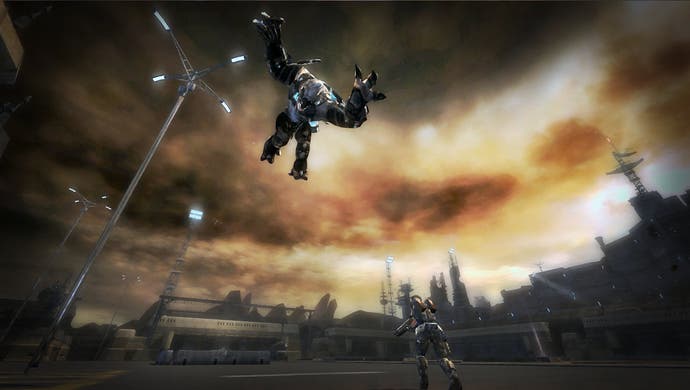Stormrise
Whipping boy.
Does anyone remember Greenclaws? He was a corpulent, anthropomorphic maggot beast, reminiscent of the protagonist from Fat Worm Blows a Sparky, who hung around with a retarded woman and a mechanical owl on his own TV programme in the late 80s. Each episode involved a contrived disaster, which forced the couple to open Greenclaws' box of special magic seeds, selecting a gaudy, intriguing little kernel and germinating it over the course of the show inside a hollow tree. At the end, the tree would open and there would be a plant inside, invariably bearing crushingly disappointing fruit, such as shoe polish or dusters. I think once it was cake, but it was carrot cake, so it doesn't count.
The point is that the seeds were always the interesting part. Shiny, brightly coloured and full of promise, there was always the mystery, the unknowing, the possibility that this week, against all odds, a plant bearing toy soldiers or Micro Machines would sprout inside the tree; that the over-hyped seed would finally come good and something truly special would bloom. Anyway, those of you well-versed in the interpretation of painfully extended analogies may already have guessed that Stormrise's success is best expressed in terms of a tree bearing curtain hooks, owl pellets and the fingernail clippings of a man with haemorrhoids and no social mores.
When I first saw the game, tucked safely away behind the PR barrier at SEGA's Brentford offices, I was cautiously impressed. Wowed by the simplicity and effectiveness of the Whip Select, in particular, I was willing to accept that what I was watching could be a generational leap for the genre.
Whip Select seems like such a pure premise. Simply hold the right stick in any direction (or click and drag on PC) and a beam of light emanates from your current unit. Direct it to one of the icons representing a friendly unit and release, and the camera flicks instantly over, settling into a third-person perspective a few feet above them. It works. In a sense. As far as selecting units goes, it's functional. You can, as promised, flick instantly from one side of the map to the other, or rattle rapidly between engaged units and production nodes. I'll even concede that, also as promised, Whip Select does these things more quickly than a mouse and keyboard. Sadly, its functionality ends there.

The first and prevailing issue is this: strategy games require a method of forming strategy. What this generally means is viewing a battlefield as a whole, complete with troop positions and movements, and directing your forces responsively and in co-ordination with one another. Stormrise, for all its rapidity of selection, simply does not allow you to do this. Because the camera is constantly fixed in a slightly elevated over-the-shoulder view for whichever unit is currently under your command, and the environments around you are flaunting their 3D verticality by being all vertical, it's impossible to see more than a few metres in any direction. Sure, this is what it's like for soldiers on the ground, but that's why armies have generals, which is, after all, the role that RTS gamers are supposed to find themselves in.
Co-ordinating attacks is nigh on impossible, especially if you try and flank enemy positions, because troops can only be moved to a cursor, positioned within visual range, or sent toward the icons of other units. Moving a unit to a position out of line-of-sight and so far unoccupied is a painful process of tiny increments, making three-point turns around buildings or obstacles. By the time they arrive, the troops assaulting whatever it was you were trying to flank will usually either have triumphed or been annihilated, rendering the entire manoeuvre pointless. The most successful tactic I discovered, at least on the more cluttered maps, was to accumulate a stockpile of the game's single resource, send a unit out until they made contact and then spam other units onto their position direct from the constructing base, hoping that the steady stream would eventually overcome resistance.








